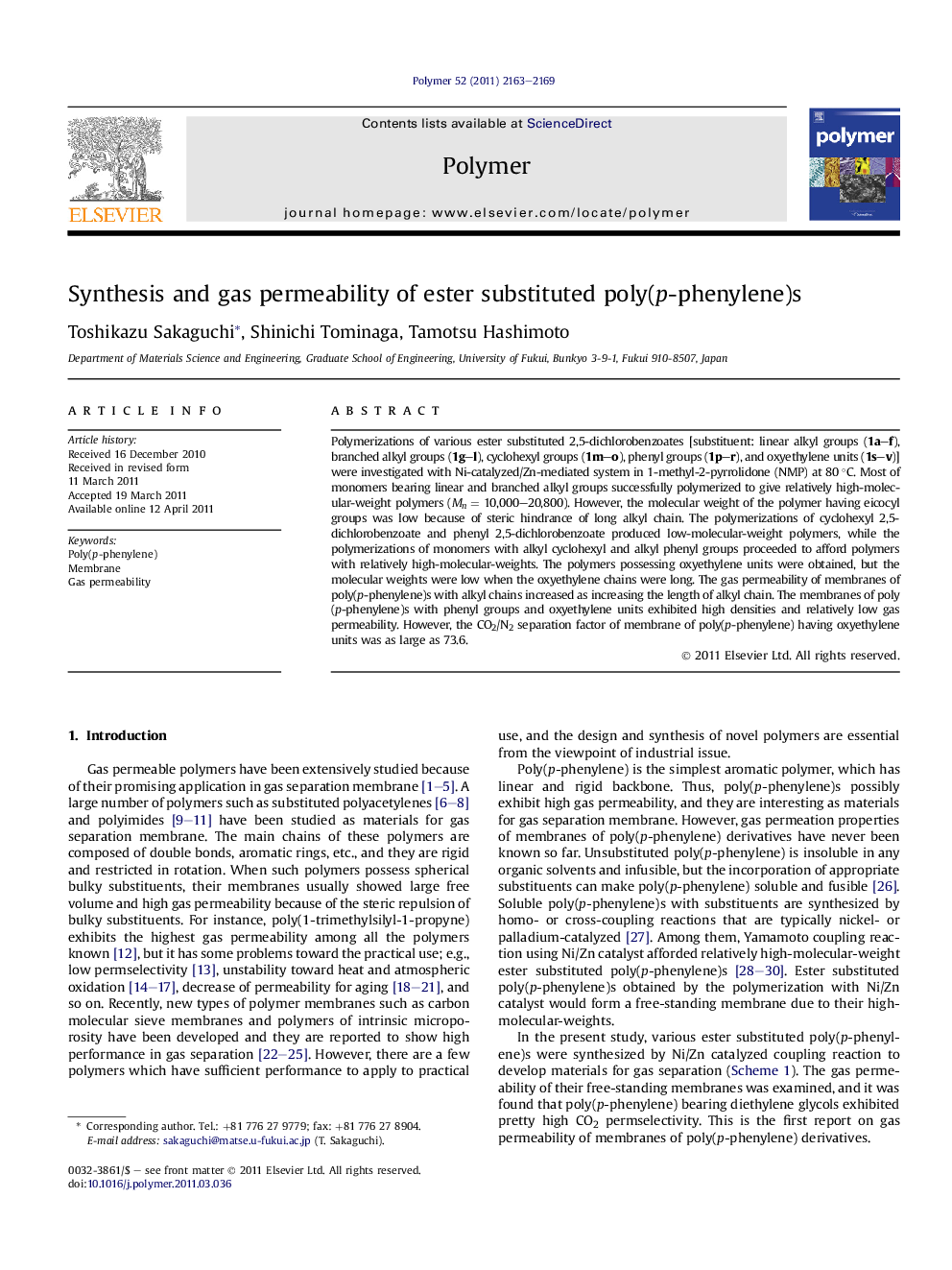| Article ID | Journal | Published Year | Pages | File Type |
|---|---|---|---|---|
| 5182939 | Polymer | 2011 | 7 Pages |
Polymerizations of various ester substituted 2,5-dichlorobenzoates [substituent: linear alkyl groups (1a-f), branched alkyl groups (1g-l), cyclohexyl groups (1m-o), phenyl groups (1p-r), and oxyethylene units (1s-v)] were investigated with Ni-catalyzed/Zn-mediated system in 1-methyl-2-pyrrolidone (NMP) at 80 °C. Most of monomers bearing linear and branched alkyl groups successfully polymerized to give relatively high-molecular-weight polymers (Mn = 10,000-20,800). However, the molecular weight of the polymer having eicocyl groups was low because of steric hindrance of long alkyl chain. The polymerizations of cyclohexyl 2,5-dichlorobenzoate and phenyl 2,5-dichlorobenzoate produced low-molecular-weight polymers, while the polymerizations of monomers with alkyl cyclohexyl and alkyl phenyl groups proceeded to afford polymers with relatively high-molecular-weights. The polymers possessing oxyethylene units were obtained, but the molecular weights were low when the oxyethylene chains were long. The gas permeability of membranes of poly(p-phenylene)s with alkyl chains increased as increasing the length of alkyl chain. The membranes of poly(p-phenylene)s with phenyl groups and oxyethylene units exhibited high densities and relatively low gas permeability. However, the CO2/N2 separation factor of membrane of poly(p-phenylene) having oxyethylene units was as large as 73.6.
Graphical abstractDownload full-size image
